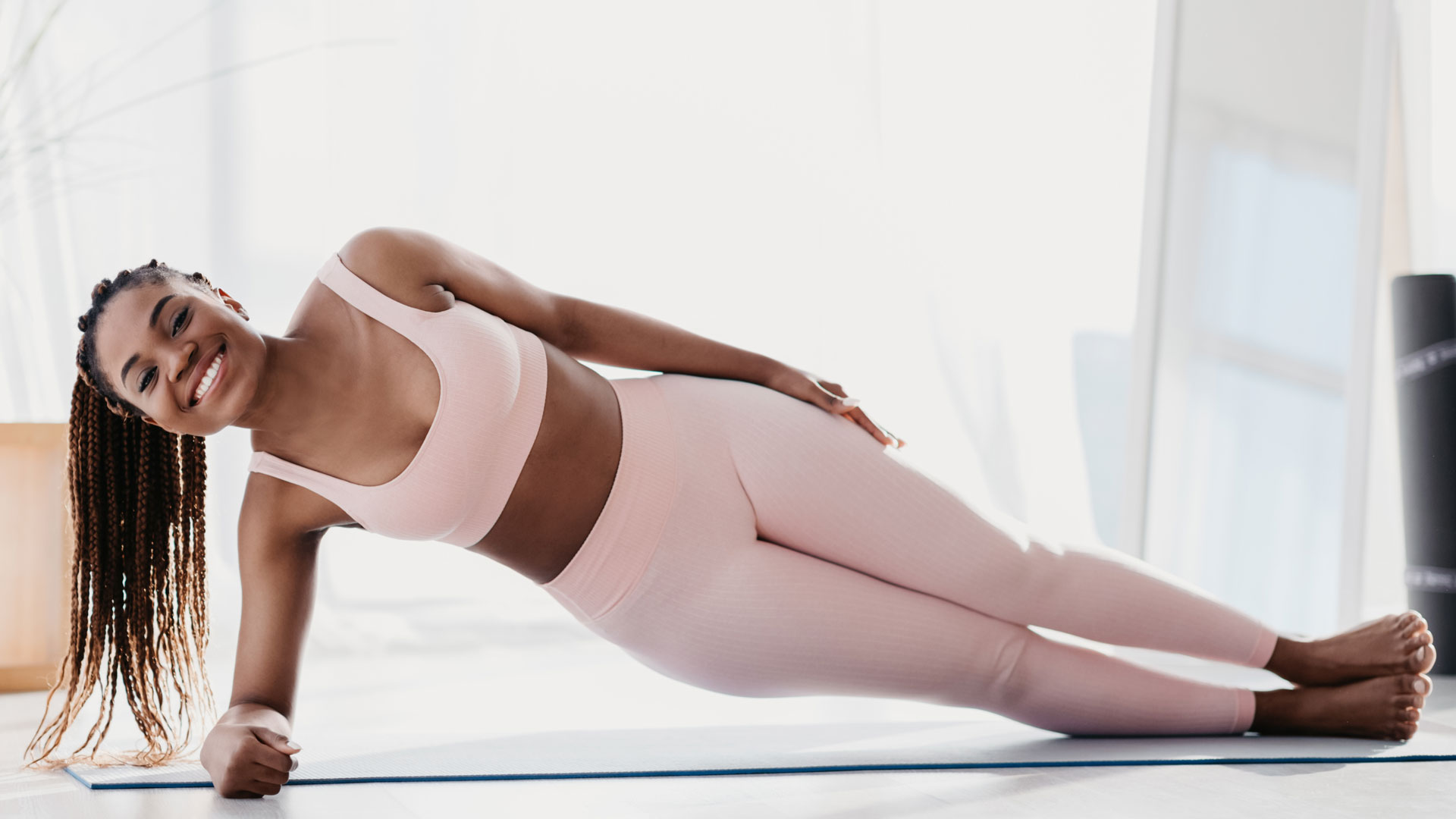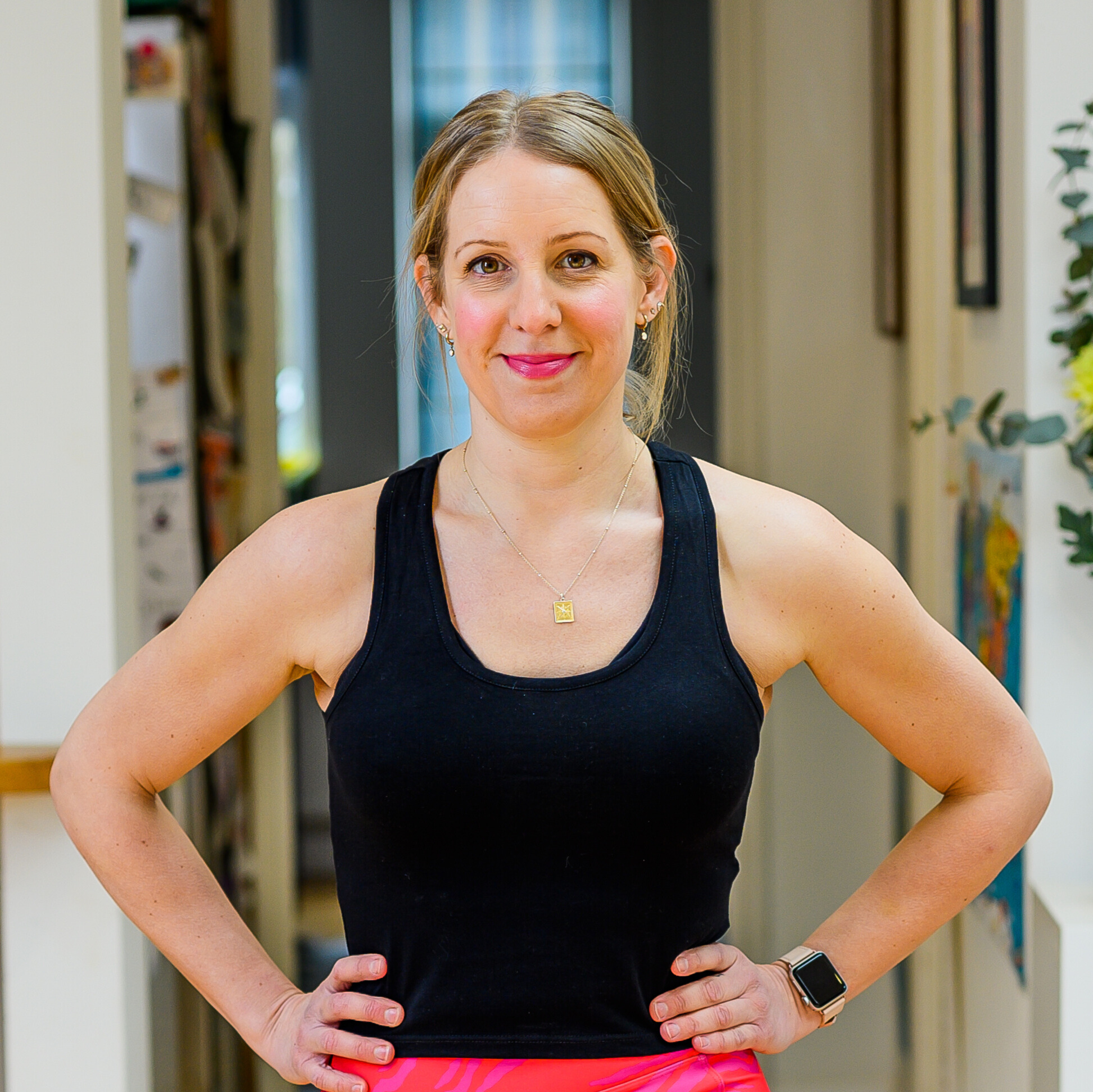How to train obliques for more defined abs
How to train obliques: try our four moves for a stronger core


If you want to know how to train obliques to create definition on your stomach, then we’ve got all the info you need. You might already have given the best abs workouts a try but our oblique muscles often require some variations to really target the muscles.
We’ve enlisted the help of personal trainer Ross Mitchell to create an exclusively four-move core workout. Having strong obliques not only helps you develop more defined abs, but it also supports your back and reduces your risk of injury and lower back pain, says personal trainer, Ross.
“This is because the obliques work with your core muscles to promote stability and balance and when these abdominal muscles are weak, your hip flexors and erector spinae muscles have to overcompensate, resulting in poor posture,” says Ross.
You can strengthen your core and obliques with the best ab rollers and resistance training, as well as following a healthy balanced diet of lean protein, vegetables, and whole grains.
Here’s exactly how to train obliques and why targeting these muscles is worth your time.
What are obliques?
The obliques are the feather-shaped muscles that run along the side of your core. They sit on both sides of the rectus abdominis muscle, often called the ‘six pack’ muscles.
Alongside the transversus abdominis muscle, the obliques are two of four main abdominal muscles. The external obliques run diagonally from the bottom of your ribs down to your pelvis. While the internal obliques are found in the abdominal wall that lies below the external obliques and above the transversus abdominis muscle.
Start your week with achievable workout ideas, health tips and wellbeing advice in your inbox.
These two muscles work together to help a range of different functions from flexing and bending the torso forwards and sideways and providing stability to the hips and lower back.

What are the benefits of training your obliques?
Boosted sports performance
Training your obliques can improve sports performance, especially when it comes to throwing capacity. “Along with a stable base to generate force, you can really ‘wind your body up’ creating a lot of torque (rotational force through the lever arm), which is basically like coiling a spring then letting go and watching it fly across the room.”
Better posture
“A strong set of obliques makes carrying objects easier due to better posture and being able to avoid the heavy side of the load you’re carrying, so you are less likely to keep shifting the weight from side to side,” says Ross. “In the long run that also helps reduce the chance of lower back issues, too.”
Reduced back pain
The obliques work together to rotate the spine left and right, and if you suffer from chronic lower back pain it could be a sign of underdeveloped obliques and a weak core.
A study in the Journal of Physical Therapy Science found that core training that included oblique exercises could help alleviate these kinds of back issues.
Better balance
As we’ve mentioned, your obliques work with your core muscles to promote stability and balance. When these muscles are weak, your hip flexors overcompensate and your spine becomes more curved, throwing off your balance.
The stronger your obliques and other abdominal muscles are, the steadier you will be on your feet. The added benefit of this is that improving your balance will also give you more stability and control during workouts.
“Another benefit of oblique training is that it makes daily activities easier by adding protection to your body from impact such as falls, in the form of added muscle mass,” says Ross.
How to train your obliques: four moves to try
PT Ross reveals his ‘core four’ moves to train your obliques for defined abs:
- Windmill (with kettlebell or other weight)
- Single arm kettlebell swing
- Side plank
- Rotational battle rope slam
Make sure you warm up for at least five minutes before starting this workout, and finish with a cool down for five -10 mins.
The windmill
This movement builds strength, stability, and lean mass.
Step 1: Lift (or curl) your chosen weight to your shoulder. Press it overhead and hold it in a straight arm position. Keep your shoulder suckled into the socket.
Step 2: Stand with your arm locked out straight overhead (left arm aligned with left leg) with a kettlebell in your hand
Step 3: Keeping the kettlebell above your head at all times, shift your weight to the heel of this leg (left) and kick your hip back and out (back and left)
Step 4: Place your free arm on the inner thigh of the opposite leg, then look at the arm overhead
Step 5: Bend at the hip, tracing your free arm down the leg until you touch the floor
Step 6: Pause and then return to the starting position. Repeat for three-five total reps then swap sides.
Single-arm kettlebell swing
This movement strips fat, strengthens your back, builds a great butt, and teaches you to remain braced in your core so that you don’t rotate when it’s not needed.
Step 1: Set the kettlebell about half a foot in front of your body’s midline with the handle in a neutral position
Step 2: Hinge down, take hold of the bell with one hand, and feel the loaded tension in the glutes, hamstrings, and erector muscles
Step 3: Pull the kettlebell back between your legs to create momentum. Explosively drive your hips forward and straighten your back to send the kettlebell up to shoulder height.
Step 4: The bell will fall due to gravity back into the hike position - repeat step four for 10-30 total reps then swap sides
For more on technique and form, watch Ross’s kettlebell masterclass over on Fit&Well’s Instagram.
Side plank
This movement helps create a fantastic mind-muscle connection through not only your obliques but also all of the muscles supporting you that can be tensed.
Step 1: Align your elbow under your shoulder (suck the shoulder into the socket)
Step 2: Make sure your feet are in line with your head and your body is in a straight line
Step 3: Lift your hips into the air and aim to bring your armpit and your hip together (squeeze)
Step 4: Squeeze your butt, flex your lats (mid-upper back between the shoulder blades) and try to side crunch in the air
Step 5: Tense your midsection (and all muscles)
Hold this for up to 30 seconds creating as much tension as possible, then swap sides. Repeat this for two to five minutes of work (so 4-10 side planks in total).
Rotational battle rope slam
This movement combines multiple elements from the three above because it helps you learn how to be stable, then explosive (rotational force) while also needing to control and reverse the movement (anti-rotational). Your heart rate will skyrocket throughout, which will help torch calories.
Step 1: Stand with feet hip-width apart and in a neutral position, holding one rope in two hands
Step 2: With the rope on one side at hip level, explosively rotate at the hip and slam the rope with your arms to your opposite side
Step 3: Repeat back to the original side - set a timer for this in intervals of 10-30 seconds and try and do this for two to five minutes.
Rest the same length of time you spent slamming the rope side to side.
Why good nutrition is important for defined abs
If you want to have a noticeable definition through the midsection, as well as oblique training, you need a low level of body fat, says Ross.
“For the best results, you need to be willing to make a lasting change in your nutrition to reduce excess body fat. Otherwise, any results may be short-lived.
“You can do this by eating a high-quality source of lean protein at each meal, filling your plate with a rainbow of vegetables, drinking lots of water, and limiting high-energy foods to hard physical days. For a rough kcal guide for shifting excess fat, take your total bodyweight in pounds and multiply it by 13.”
Maddy Biddulph is a journalist specializing in fitness, health and wellbeing content, with 26 years in consumer media working as a writer and editor for some of the bestselling newspapers, magazines and websites in the US and UK, including Marie Claire, The Sunday Times and Women’s Health UK.
She is a CIMPSA-certified PT and works one-on-one with clients, as well as running Circuits Club classes which mixes cardio and strength training and chair-based exercise classes for seniors.
